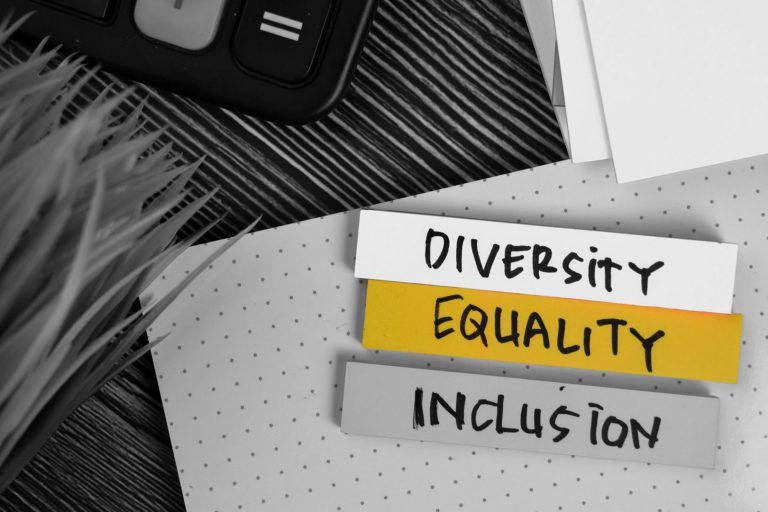Gender Diversity Pays
When it comes to leaders, we have a type—and it’s usually male. Still. This has been slowly changing, but we have a long way to go. Gender diversity isn’t just a trendy phrase, it’s a strategic priority for organisations that choose to lead the way. In fact, having more women at work brings a variety of benefits that are too good to miss out on. Greater diversity brings a broader skillset and delivers stronger financial performance, while also raising the bar for society as a whole.
Ideas, Skills and Problem Solving
Gender diversity in the workplace brings fresh talent, varied skillsets and new ideas. We’ve known for a long time that innovation happens by thinking differently and being different. As organisations assemble diverse teams, they prime themselves for creativity, improve decision-making and reduce groupthink[i]. Some even suggest women can be better listeners than their male counterparts and that mixed-gender teams are better at collaboration, processes and performance[ii].
Engagement and Financial Performance
Speaking of performance, it turns out that employing more women is the secret to better financial outcomes. Indeed, unlocking higher profitability is strongly linked to gender-diversity at the leadership table. In the boardroom, organisations with at least three female board members are 15% more likely to outperform their peers[iii].
If supercharging your workforce is a priority, it makes sense to reach for diversity. Plus, diversity and inclusion in the workplace increase employee engagement. It can also boost an organisation’s reputation, making it more appealing for jobseekers. Top female candidates, in particular, prefer workplaces that embrace diversity[iv]. Inclusive workplaces also tend to experience lower employee turnover, so it saves on hiring costs too[v].
Pay and Gendered Jobs
When it comes to gender equality, we have a way to go. In Australia, the pay gap is driven by job segregation, where men occupy higher-paying sectors and women are in lower-paying ones. Male-dominated industries like mining, construction and manufacturing employ fewer than 30% women, yet they offer above-average pay. On the other hand, healthcare and social assistance sectors employ 80% women but the roles tend to be lower paid[vi]. Breaking stereotypes and encouraging women to enter non-traditional industries to pursue roles typically held by men will increase talent pools and combat skills shortages.
Fighting Skills Shortages
There are serious skills shortages across Australia. The issue is more prominent in traditionally male-dominated industries like the automotive and construction trades, where women make up just 20% of the workforce. According to higher education research, Aussie women are among the world’s most educated. More women are university graduates while certificate and diploma students are typically male[vii]. However, this landscape is causing an underrepresentation of women in trades and technical roles. Closing the workforce participation gap between men and women—even by just half—would create an additional 500,000 skilled full-time workers[viii]. With job vacancies reaching 431,600 in May 2023, addressing gender disparities is one essential strategy to bridge the gap[ix].
Challenging Stereotypes and Bias
Gender stereotypes start early in life. Children must choose school subjects that align with their career trajectory. Despite recent pushes to encourage more females to pursue STEM subjects and training in male-dominated industries like trades, change is slow[x]. Between society pressures, lingering stereotypes and a lack of fellow females enrolled, the attractiveness of these areas of study remains low. When combined with limited real-life examples and awareness of available career paths post-graduation, driving change is a longer-term mission.
Breaking into Trades
For women who are ready to enter a trade career, there are a variety of programs designed to make it easier. Breaking into a traditionally male-dominated sector can be scary, but it doesn’t have to be. The BUSY Group’s innovative BUSY Sisters program, funded by the Australian Government, was created to help women in trades through mentoring support and peer-to-peer collaboration. At BUSY, we’re committed to supporting women in non-traditional industries. We believe jobs don’t have genders and we’re encouraging all women who want to build a career in trades to make it happen. With the right support, anything is possible.
If you’re an employer ready to diversify your workplace, or a woman venturing into a non-traditional trade, BUSY has practical solutions and support to make it happen.
About the Author
Sue Loch is the Chief Commercial Officer of The BUSY Group, a not-for-profit organisation based in Australia providing a range of apprenticeship, employment and training solutions. With a background in healthcare and the Vocational Education and Training (VET) sector, she builds relationships and drives for-impact programs that create opportunities for individuals and supercharge workforces.
[i] Xie L, Zhou J, Zong Q & Lu Q (2020). “Gender Diversity in R&D Teams and Innovation Efficiency: Role of The Innovation Context”. Research Policy. (49)1.
[ii] Bear J & Woolley A W (2011). “The Role of Gender in Team Collaboration and Performance”. Interdisciplinary Science Reviews 36(2).
[iii] Dixon-Fyle S, Dolan K, Hunt V & Prince S (2020). “Diversity Wins: How Inclusion Matters”. McKinsey & Company.
[iv] Turban S, Su D & Zhang L (2019). “Research: When Gender Diversity Makes Firms More Productive”. Harvard Business Review.
[v] Brown K (2018). “To Retain Employees Focus on Inclusion – Not Just Diversity. Harvard Business Review.
[vi] Duncan A S, Mavisakalyan A & Salazar S (2022). “Gender Equity Insights 2022: The State of Inequality in Australia”. BCEC|WGEA Gender Equity Insights Report #7.
[vii] Coelli M (2022). “Australian Women Are More Educated Than Men, But Gender Divides Remain at Work”. The Conversation.
[viii] Jackson A (2022). “Addressing Australia’s Critical Skill Shortages: Unlocking Women’s Economic Participation”. CEW Impact Economics and Policy.
[ix] ABS (2023) “Job Vacancies, Australia”. Australian Bureau of Statistics.
[x] Australian Human Rights Commission (2013). “Women in Male-Dominated Industries: A Toolkit of Strategies”. WMDI Toolkit.
